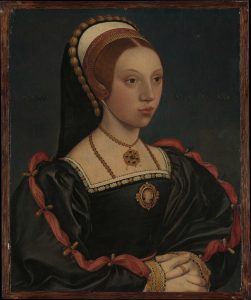 Like her cousin Anne Boleyn, Katherine Howard was a granddaughter of Thomas Howard, 2nd Duke of Norfolk, and a niece of the third duke. She was born in about 1523, probably at Lambeth, to Edmund and Jocasta Howard. During her infancy, Katherine’s mother died and her father, who seems to have been both irresponsible and financially straitened, remarried twice. In 1531, when she was about eight years old, she departed for the household of her step-grandmother, Agnes, Dowager Duchess of Norfolk, at Cheshunt. The dowager duchess, who was one of the premier noblewomen in England, also kept a household at Norfolk House in London and regularly resided at court. Her periods of absence prevented her from supervising her household as closely as she might have liked.
Like her cousin Anne Boleyn, Katherine Howard was a granddaughter of Thomas Howard, 2nd Duke of Norfolk, and a niece of the third duke. She was born in about 1523, probably at Lambeth, to Edmund and Jocasta Howard. During her infancy, Katherine’s mother died and her father, who seems to have been both irresponsible and financially straitened, remarried twice. In 1531, when she was about eight years old, she departed for the household of her step-grandmother, Agnes, Dowager Duchess of Norfolk, at Cheshunt. The dowager duchess, who was one of the premier noblewomen in England, also kept a household at Norfolk House in London and regularly resided at court. Her periods of absence prevented her from supervising her household as closely as she might have liked.
At the end of 1536, Katherine commenced music lessons with Henry Manox and one Barnes. Her step-grandmother probably hoped that Katherine would receive an appointment within the queen’s household as one of her maidens, although the execution of their kinswoman Anne Boleyn earlier that year may have momentarily put paid to that particular ambition. Competition for a place in the queen’s household was intense, and Anne’s successor, Jane Seymour, had already declined several applications for appointments. However, knowledge of courtly skills, including dancing and music making, were encouraged among the aristocracy. Several of Katherine’s relatives, including the late queen as well as Mary Howard, Duchess of Richmond, were well-educated and interested in reform, but there is no evidence that Katherine herself shared these evangelical sympathies, and the learning of languages, for example, is conspicuously absence from surviving records of her education.
Katherine’s music lessons, innocent enough at first, eventually became a source of scandal when Manox inappropriately fondled her, on one occasion at least in the dowager duchess’ chapel in the evening. That Katherine was aware of the inappropriateness of the liaison is clear from her warning to Manox that he should not expect sexual intercourse from her, given the discrepancy in social status. A year or so later, Katherine became romantically involved with Francis Dereham, an attendant in the household of her step-grandmother. Dereham, who was about fifteen years older than Katherine, seems to have hoped that they would eventually marry, and later alleged that he had openly referred to Katherine as his wife while she addressed him as her husband. By contrast, Katherine claimed that she had never welcomed Dereham’s attentions and accused him of forcing himself upon her. Their sexual relationship was apparently well known among their acquaintances. Katherine’s appointment to the household of Anne of Cleves in the closing months of 1539 ended her affair with Dereham.
Traditionally historians have suggested that Katherine was deliberately placed at court to seduce the ageing king, whose discontent with Anne of Cleves encouraged the conservatives desirous of a return to Rome. However, Henry himself seems to have been actively involved in deciding appointments to the queen’s household. The dowager duchess of Norfolk reported that he had fallen in love with Katherine the moment he set eyes upon her. The attractive Katherine apparently also caught the eye of Thomas Culpeper, but when Dereham arrived at court questioning her about her rumoured betrothal to Culpeper, she bluntly refuted the accusation. Her residency in the household of Anne of Cleves was ultimately short-lived, for the rustication of the queen was swiftly followed by the annulment of her marriage and her displacement with Katherine, whose marriage to the king took place on 28 July 1540 at Oatlands Palace. On 8 August, she was openly proclaimed queen at Hampton Court Palace, and the king’s subjects were later requested to pray for her as well as for the king and prince.
According to a contemporary observer, Henry was delighted with his new bride and felt rejuvenated, waking up earlier than usual and spending hours hunting and enjoying the feasts. Katherine herself welcomed her position as queen and participated in the ceremonies and festivals at court with enthusiasm. She also acted as patron for her family, assisted her brothers with appointments at court and attempted to promote one of her clerics. Her diplomatic nature was in evidence when Anne of Cleves arrived at court at New Year 1541. The former queen was welcomed by her successor and spent the evening dancing while the king retired. According to Chapuys, Katherine’s relations with her eldest stepdaughter Mary were less satisfactory, but it is also possible that allegations of their conflict have been overstated. Katherine later made gifts of jewellery to both Mary and Elizabeth, as well as to her niece-by-marriage, Lady Margaret Douglas.
Rumours had circulated in the summer of 1540 that Katherine was pregnant even before her marriage, and at Easter 1541 there were further suggestions that she was with child, but there is no evidence that she ever conceived during her marriage to Henry. Allegations of the king’s periodic impotence had surfaced during the last weeks of his marriage to Anne Boleyn and during the negotiations for the annulment of his marriage to Anne of Cleves. At about the same time as these rumours were in circulation, Dereham arrived at court requesting a place in the queen’s household. Before long, he was openly boasting of his former relationship with Katherine and insinuated that, should the king die, he would be sure to marry her. According to later evidence, the queen met with Thomas Culpeper, a groom of the privy chamber, on Maundy Thursday, where she provided him with gifts and warned him to keep them secret.
The pinnacle of Katherine’s career occurred that spring and summer when she departed with the king and their households for the north, a region traditionally riven with political and religious discontent. Katherine participated in all of the ceremonial occasions on progress, including those in Lincoln. During the progress, she continued to meet with Culpeper. Perhaps at the end of July 1541, according to the testimony of her ladies, she sent a letter to Lady Rochford, her Lady of the Bedchamber, and warned her to keep it secret. This letter might have been the one traditionally said to have been written by the queen to Culpeper, in which she asks when she will see him again and voices her hope that he will be as he has promised her. The closing statement, “Yours as long as life endures,” was a contemporary variant of “yours during my life”. Clearly, the queen wished to meet with Culpeper regularly, assisted by Lady Rochford, but whether her motives were based on romantic passion or on fear remain open to question. Why Culpeper requested audiences with Katherine is not clear. Whether he was genuinely in love with her, or whether he was hoping for political advancement and financial gain, cannot now be resolved.
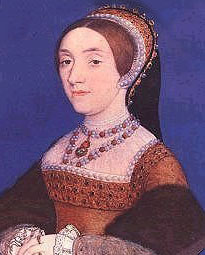 The court returned from the northern progress at the end of October. To celebrate All Souls, Henry gave orders for his marriage to Katherine to be celebrated in prayers, in thankfulness for the joy that she had brought him. However, the reformer John Lascelles’ accusations concerning the queen shortly afterwards meant that an investigation was established concerning her affairs with both Manox and Dereham. Later, her relationship with Culpeper was also investigated, and the ladies of her household, including Lady Rochford, were interrogated concerning what they knew about their liaison. Lady Rochford admitted that she believed that the two had engaged in sexual intercourse, but other attendants blamed the viscountess for encouraging the affair. Culpeper and Katherine both swore that they had not committed adultery and had not gone further than conversation. The queen admitted that she had referred to Culpeper as a “little sweet fool” and had warned him to keep their meetings secret for fear of discovery. Culpeper alleged that the queen had been dying of love for him, but also noted that she had shown him little favour: perhaps a sign of discontent that he had not been rewarded as well as he had initially expected to be. He also stipulated that both he and Katherine had intended to commit adultery. Perhaps the queen had genuinely loved Culpeper, given the nature of rumours before her marriage to the king that she and Culpeper might marry, but it is also possible that the politically tense climate of spring 1541 brought unwelcome knowledge to Culpeper’s attention concerning Katherine’s illicit relationship with Dereham. If she desired to prevent knowledge of the Dereham liaison coming to light, however, she failed to reckon with Dereham’s own indiscreet behaviour at court.
The court returned from the northern progress at the end of October. To celebrate All Souls, Henry gave orders for his marriage to Katherine to be celebrated in prayers, in thankfulness for the joy that she had brought him. However, the reformer John Lascelles’ accusations concerning the queen shortly afterwards meant that an investigation was established concerning her affairs with both Manox and Dereham. Later, her relationship with Culpeper was also investigated, and the ladies of her household, including Lady Rochford, were interrogated concerning what they knew about their liaison. Lady Rochford admitted that she believed that the two had engaged in sexual intercourse, but other attendants blamed the viscountess for encouraging the affair. Culpeper and Katherine both swore that they had not committed adultery and had not gone further than conversation. The queen admitted that she had referred to Culpeper as a “little sweet fool” and had warned him to keep their meetings secret for fear of discovery. Culpeper alleged that the queen had been dying of love for him, but also noted that she had shown him little favour: perhaps a sign of discontent that he had not been rewarded as well as he had initially expected to be. He also stipulated that both he and Katherine had intended to commit adultery. Perhaps the queen had genuinely loved Culpeper, given the nature of rumours before her marriage to the king that she and Culpeper might marry, but it is also possible that the politically tense climate of spring 1541 brought unwelcome knowledge to Culpeper’s attention concerning Katherine’s illicit relationship with Dereham. If she desired to prevent knowledge of the Dereham liaison coming to light, however, she failed to reckon with Dereham’s own indiscreet behaviour at court.
The king was heartbroken and refused to see Katherine again. In December 1541, Dereham and Culpeper were tried and found guilty of treason and executed that month. Katherine and Lady Rochford were executed at the Tower of London on 13 February the following year. Both followed the execution protocol, in which they admitted the justice of their sentences and begged the onlookers to pray for them, while praising Henry as a merciful sovereign. While Lady Rochford became a scapegoat in later literature for the downfalls of Anne and George Boleyn, Katherine assumed the role of a flighty adulteress who cuckolded her husband just as he had cuckolded the church of Rome.
Written by Conor Byrne, author of Katherine Howard: A New History and Queenship in England: 1308–1485 Gender and Power in the Late Middle Ages. Conor is a British graduate with a degree in History from the University of Exeter. Conor has been fascinated by the Tudors, medieval and early modern history from the age of eleven, particularly the lives of European kings and queens. His research into Katherine Howard, fifth consort of Henry VIII of England, began in 2011-12, and his first extended essay on her, related to the subject of her downfall in 1541-2, was written for an Oxford University competition. Since then Conor has embarked on a full-length study of queen Katharine's career, encompassing original research and drawing on extended reading into sixteenth-century gender, sexuality and honour. Some of the conclusions reached are controversial and likely to spark considerable debate, but Conor hopes for a thorough reassessment of Katherine Howard's life. Conor runs a historical blog which explores a diverse range of historical topics and issues. He is also interested in modern European, Russian, and African history, and, more broadly, researches the lives of medieval queens, including current research into the defamed 'she-wolf' bride of Edward II, Isabella of France.
Conor is currently studying for a Masters.

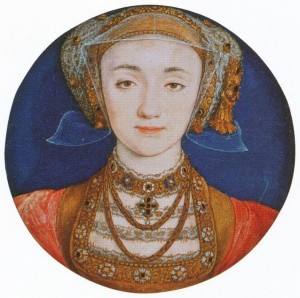
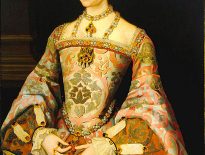
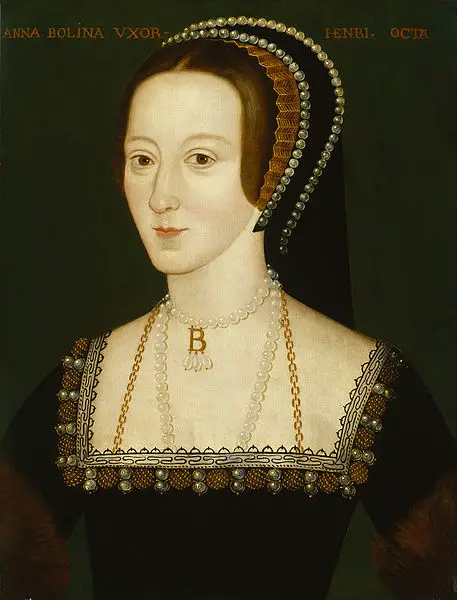
Poor girl, just desperate for attention 😞
Katherine was easy prey for Mannox and Dereham. We know Mannox groomed her to accept sexual advances at the age of 12. Today, we recognize this as predation or ‘softening’. Katherine appeared to be ripe for Dereham’s attentions. A child who has been preyed on and then spins out of control, when placed in the hotbed of court politics, flirtation and assignations, disaster followed once Henry VIII became involved. Poor Katherine
Hi Loretta,
We had a live chat yesterday with Gareth Russell, author of “Young and Damned and Fair”, a biography of Katherine, and you might be interested in reading the transcript of the chat as Katherine’s sexual history and the theories about it did come up – see https://www.tudorsociety.com/livechat-gareth-russell-howards/. His talk on the Howards can be viewed at https://www.tudorsociety.com/expert-talk-rise-howard-dynasty-gareth-russell/.
Best Wishes,
Claire